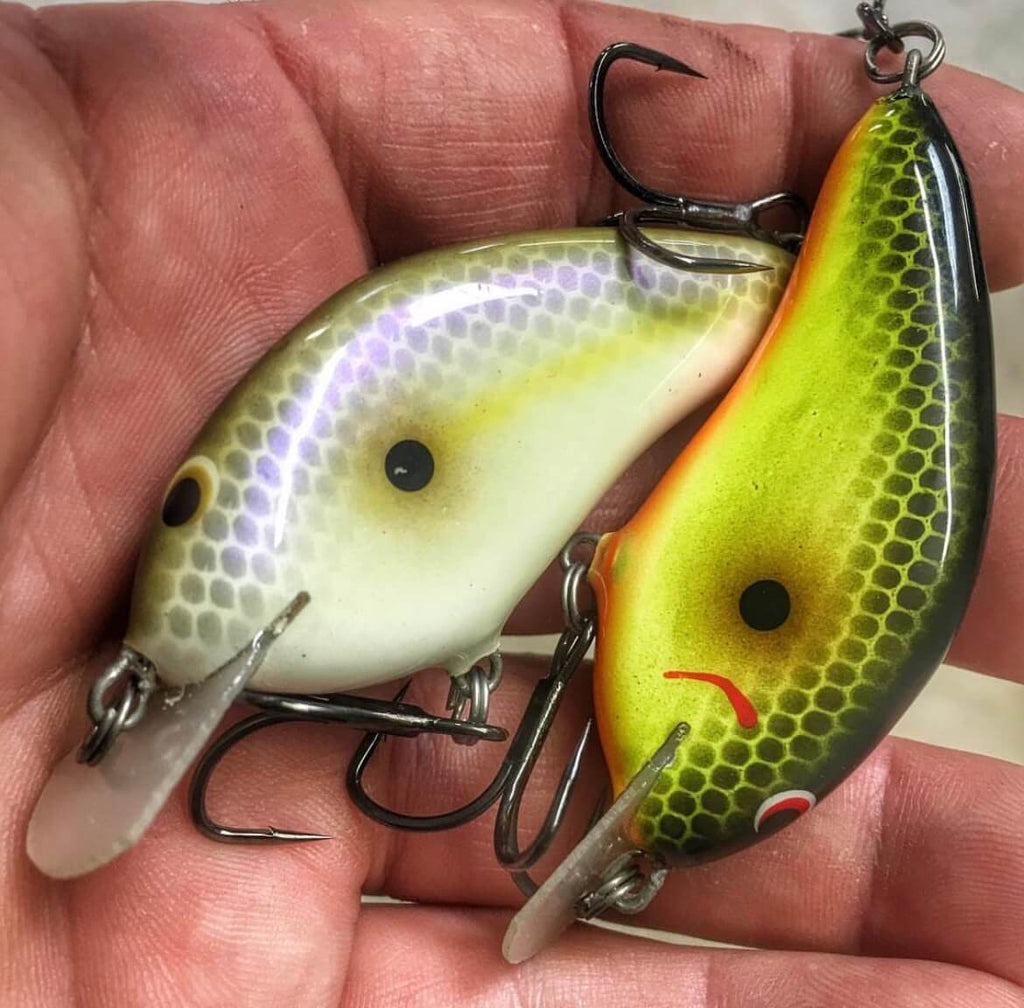Crankbaits come in all shapes and sizes. Different combinations of body and bill designs come together to create a wide array of actions. And with the ability to fish a crankbait from one to over 25-feet of water, all of this means there’s often a lot that goes into picking out the right crankbait for a particular set of conditions.
Well today, we want to simplify things a bit. We’re going to look at a few of the main things that vary from one crankbait to another, and hopefully make it a little easier the next time you go to select the right bait for the job.

Body style
There are two main body styles when looking at a crankbait: flat side and round. Flat side baits are primarily for fishing high pressure situations, or times when bass are particularly sluggish in cold water. Bass are cold blooded, and this means that colder water temps lowers their metabolism and activity level. So flat side, or finesse crankbaits, that have a tighter action are often more effective in cold water.
Then there’s the round body crankbaits, which have a wider wobble. These baits often also have rattles, where most flat side crankbaits are silent. The wider wobbling, round body crankbaits move more water and thus are easier to locate for a bass, which use its lateral lines to detect vibrations in the water. So a round body crankbait is often better in warmer water when the fish are more active and willing to chase a bait that they can feel from farther away.

Bill design
Again there are two basic bill designs: square and round. Square bills are typically found on shallow running, round body baits. These are referred to collectively as ‘squarebills’. This bill design is more effective in shallow water situations because it comes through cover like rocks, wood and vegetation well. A sqaurebill also deflects harder off of cover, creating an erratic action that often triggers a strike.
Round bills are usually longer and designed for baits that are meant to dive deeper. This bill design creates a little bit of tighter wobble compared to a square bill, though the wobble is more dependent on the body style as previously discussed. Round bills are the more common of the two bill designs, with the majority of crankbaits sporting these instead of square bills.

Depth
There are crankbaits that dive to all sorts of depths, from less than a foot to more than 25. These are typically easy to identify based on the length of their bills. The longer the bill, the deeper the bait will dive. So if you’re wanting to fish shallow, you’ll need to go with a shorter bill. And the deeper you want to go, the longer the bill you’ll need.
There are also different pitches to bills. A flatter bill that is more inline with the body of the bait will dive more gradually. Where a steeper pitch bill that is at a sharper angle to the body of the bait will cut into the water harder and dive faster. All crankbaits also have the depth range that they will dive to on the packaging somewhere, further simplifying things.

Color
Color selection typically comes down to matching the hatch when selecting the right crankbait. So if shad are the predominant food source in your local fishery, go with a shad pattern that will be either white or translucent. If perch are the primary forage, go with a perch color bait. If you’re trying to imitate a crawfish with a bait, again choose the color accordingly.
This only really changes when the visibility decreases, like in stained to muddy water for instance. Although you may be trying to mimic a shad, you’ll want to add in some chartreuse to help the bait stand out a little better in the low visibility. Using two-tone baits that are comprised of contrasting colors helps here too, like a black back and chartreuse side bait. This contrast in colors creates a flash that helps bass find the bait as well.

In conclusion
From rattles to silent, flat to round bodies, round to square bills and with all sorts of depths and colors to choose from, picking the right crankbait can seem a little daunting. But keep in mind these simple tips. With color, try to match the hatch in clear water and help the fish find the bait in low visibility. With depth, it really just depends on how deep you’re fishing and then matching that up with the label on the bait.
Rounder baits have wider wobbles and are more effective on aggressive fish, typically. And the rule of thumb for flat side baits is the opposite, meaning they’re usually more effective on finicky fish. Square bills are the go to shallow and round bills come into the picture when you start targeting bass in more than 5- feet of water. There is a lot to consider, but hopefully these tips will help simplify the process.
← Older Post Newer Post →


